
A lesson learning about how soybeans and fuel can have an impact on your future and possible careers.
- Subject:
- Agriculture
- Material Type:
- Lesson
- Author:
- Heath Ahrens
- Date Added:
- 08/23/2023

A lesson learning about how soybeans and fuel can have an impact on your future and possible careers.
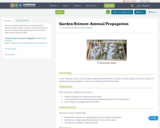
In this 7th grade science lesson, students identify desirable traits in plants and take cuttings from parent plants to facilitate asexual propagation and produce offspring with identical DNA.

Students will develop the skill to make a butt joint with proper penetration.

You will develop the skill of creating a convex T weld with a ⅛” leg size in the flat position.

Gene mutations occur naturally through the DNA replication process with some results being fatal and others being helpful. This lesson will explore the types of mutations that occur, the effect they have on DNA, and examples of diseases or conditions caused by the specific type of mutation. Students will participate in a gallery walk to learn more about the types of mutations.
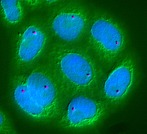
Many times, gene mutations lead to some sort of genetic disease or disorder. Through this lesson, students will explore a genetic disease, caused by a specific type of gene mutation (previously learned about) and present their findings to the class.

In this lesson, students will view a "yuck steak" and identify that the lesion is caused by an injection. Students will then watch videos on how to administer an intramuscular and subcutaneous injection. After watching the videos, the student will use the Marcel Marceau e-Moment to mime the procedures. The students will then practice injections on an orange and cut the orange in half, viewing how the injections disperse throughout the orange. The students will then video their demonstrations of each injection to submit for grading.NE.AFNR.HS.28.5.b or NE.AFNR.HS.29.5.b

With an understanding of plant anatomy and physiology, students will be able to problem solve to identify plants they see daily. This lesson will walk students through plant physiology and provide some activities that will help students learn the plant structures. Developed by Brent Nollette,

This is the first of three lessons in greenhouse operation and management. This lesson introduces learners to components of greenhouses and the ways greenhouses benefit growing conditions. The presentation covers types of greenhouses, covering materials, and benefits and downfalls to these characteristics.
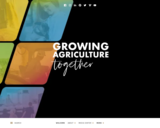
Every day the gap between producers and consumers continues to grow. Growing Agriculture Together was built to help consumers understand the producer. We want to start a conversation; let’s learn something new together! Don’t wait. Learn more about cooperatives, grain, energy, agronomy, feed and safety today!
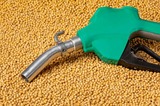
How can we manufacture environmentally friendly fuels using renewable sources? In this lesson, students will explore the process used to produce biodiesel from soybeans and test the efficiency of their fuel.

Nebraska Harvest of the Month is a statewide farm to school program that features different Nebraska local food products each month of the year. The program promotes local fruits and vegetables and provides schools with resources to support sampling and serving local foods to students. All material is FREE and available to download for use in schools, early care and education facilities, afterschool programs, and homes!
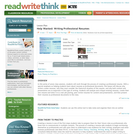
Students will create a beginning resume that represents their current work experience and demonstrates their knowledge of rhetorical situations for professional writing.
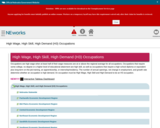
The Nebraska Departments of Labor, Economic Development and Education collaborated to provide educators, economic developers, students and their parents, community leaders and career seekers information on the states’ high skill, high wage and high demand occupations that can be sorted by region or statewide or grouped by Career or Industry Cluster.
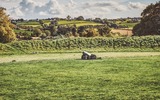
Students take notes and read articles about how life changed for humans because of the introduction of agriculture. Students play “MasterMind” using the dates of significant changes in agriculture and complete a worksheet while researching historical events that have impacted agriculture.
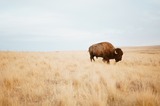
Wildlife has been in the United States longer than any settler or Indian tribe. From buffalo in the west to the white-tailed deer in the east, wildlife has been in the environment for centuries. When the settlers landed in the United States they had to learn how to interact with the wildlife and use it to their advantage…without exploiting it. What did the wildlife look like when settlers first arrived in the U.S. and how has it evolved over time?

This introductory lesson presents an overview of the horse industry including classification, breeds, colors, tack, and history of horses used in the United States. This represents a portion of the Introduction to Agriculture, Food, and Natural Resources (AFNR) series in Nebraska middle and high school agricultural education.
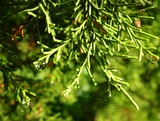
The students will simulate different methods used to treat the Eastern Red Cedar, using the Prairie Protector Game.
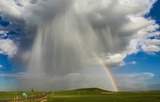
This activity guides students through an ‘idea storm’ where they practice identifying a pain point, or opportunity, in the context of exploring business ownership, entrepreneurship, and Supervised Agricultural Experiences as part of agricultural education. Developed by Engler Entrepreneurship Program, University of Nebraska - Lincoln
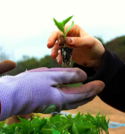
A large part of CDEs is identification. In this lesson, students help make the quiz slides and then have a weekly quiz on plants. This can be used for animal breeds, veterinary science tools and parasites as well!